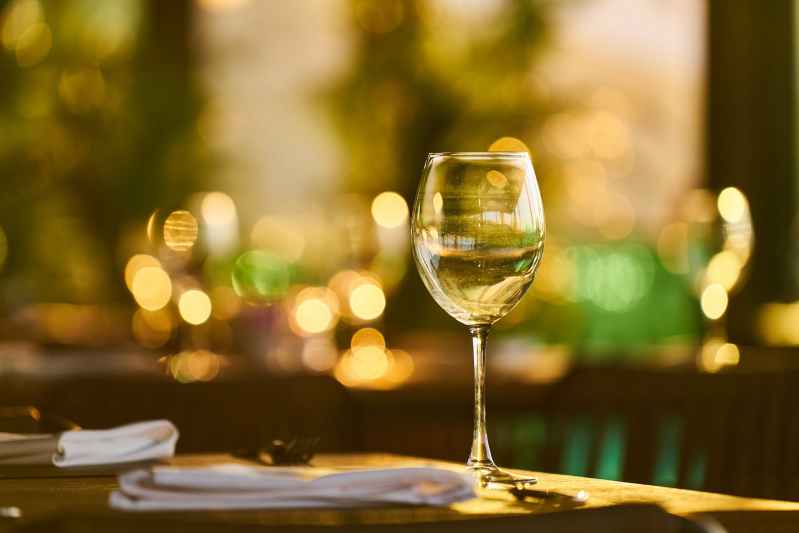
Primary flavors of chardonnay
Chardonnay comes in three main varieties – sparkling, oaked, and unoaked. Depending on which of these three categories a chardonnay may fall into, its flavors will change drastically. Sparkling chardonnay is very much like any other sparkling wine in its effervescence and zing, like other sparkling wines such as champagne, sparkling chardonnay ranges in flavor and depth.
Oaked chardonnay is a chardonnay that has been aged in oak barrels and carries with it warmer notes of oak wood, vanilla, and spice. Unoaked chardonnay tends to be much lighter in flavor, ranging from fresh and fruity notes like apple to juicier, more luscious tropical fruits like pineapple and papaya.
Chardonnay’s environment also has quite a bit to do with its flavor. Cooler climate chardonnay tends to taste fruitier and crisp, while warmer climates produce richer, more buttery flavors like butterscotch and honey.
What is the taste profile of chardonnay?
As with most wines, no two bottles of chardonnay are the same, so pinning down one general taste profile can be tricky. Generally speaking, though, chardonnay is a dry, medium-bodied wine with average acidity and alcohol levels. It tends to be very fruit-forward, but not generally sweet.
Where does chardonnay grow?
While chardonnay originated in Burgundy, France, it is now grown just about everywhere and is the most planted white-wine grape in the world. The most coveted and respected chardonnay still comes from Burgundy, as well as Napa and Sonoma, California.
How to serve chardonnay
Like most white wines, chardonnay should be served chilled. The ideal serving temperature for chardonnay is 50 degrees Fahrenheit. Warmer than 50 degrees, alcohol in white wines, particularly chardonnay, can taste hot on the palate, and the flavors may become muddled. Much colder than 50 degrees, however, and the flavor and aromas can’t properly breathe. A full-bodied chardonnay should also be decanted for about 30 minutes before serving.
Foods that pair well with chardonnay
Like most crisp white wines, non or less oaky chardonnay pairs beautifully with seafood, including lobster, shrimp, and scallops. Chardonnay also has the chops to stand up to meatier seafood like swordfish, as well as chicken and pork dishes, especially those bottles with more buttery notes. Oaky chardonnay pairs best with warm, toastier flavors like grilled or smoked foods, baked goods, and toasted ingredients.
Is chardonnay dry or sweet?
The language of wine can be terribly confusing. While chardonnay is classified as dry, or, in other words, not sweet, that doesn’t mean it can’t sometimes taste sweet. The reason for this is that chardonnay can be very fruity, and fruit, naturally, has a sweet flavor. In wine-speak, the term “sweetness” generally refers to the amount of residual sugar in wine, not necessarily the sensation of sweetness as a whole.
All of this to say, chardonnay is a dry wine that, depending on your definition of sweetness, can sometimes taste fruity and therefore, sweet.
Is chardonnay a high-end wine?
While there are both high-end and bottom-of-the-barrel wines of every varietal, there is something rather prestigious about chardonnay. That isn’t to say that it’s better or worse than any other wine on the market, but its rich, noble history and ability to stand the test of time make it something of an Old World classic.
It should be noted, though, that a low-end chardonnay is, in our opinion, far more noticeable than a lower-quality bottle of any other varietal. This is because many cheaper labels often like to use what is called “fake oak” in the winemaking process. This is done by adding oak chips or oak inserts in lieu of aging in real (more expensive) oak barrels. It’s often highly detectable when this method is used, and instantly pollutes the integrity and the taste of an otherwise fine chardonnay.
Which is better, chardonnay or sauvignon blanc?
Both chardonnay and sauvignon blanc have distinctive traits that make them beautiful and unique, and choosing a favorite between the two can be difficult. Both are wonderful in their own right, but they are very different, flavor-wise. Sauvignon blanc is generally brighter and sweeter than chardonnay as it contains more residual sugar. Chardonnay is richer and more full-bodied than sauvignon blanc, making it better for pairing with heavier dishes.
Is chardonnay or pinot grigio sweeter?
While chardonnay is the drier of these two popular white wines, it’s also often considered the sweeter of the two, as well. This is due to the high acidity in pinot grigio, which cuts the sweetness and accentuates the tart notes in this wine.
Editors' Recommendations
- How many shots are in a handle of liquor? We’ll walk you through it
- What is ice wine and why is it so special?
- The Macallan releases a limited-edition single malt scotch perfect for holiday gatherings
- Beer news: Left hand Brewing introduces Belgian White Nitro, the world’s first bottled wheat beer with nitrogen
- The Irish Whiskey Awards named this the best Irish whiskey of the year (and they should know)













